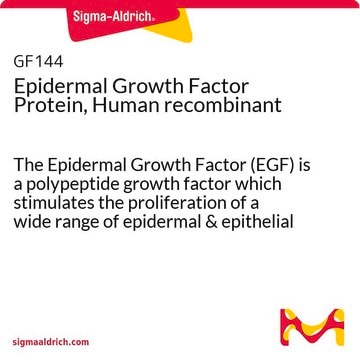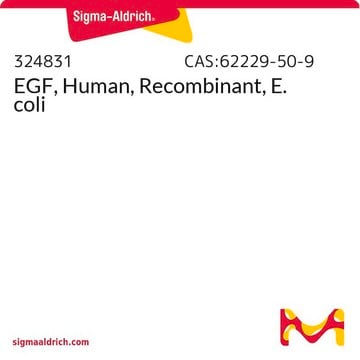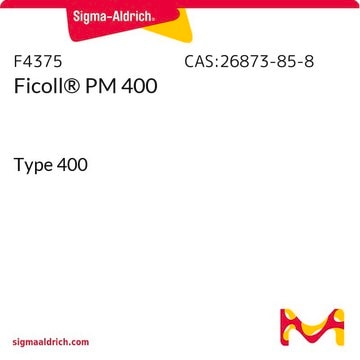05-117
Anti-FGF-2/basic FGF (neutralizing) Antibody, clone bFM-1
clone bFM-1, Upstate®, from mouse
Sinónimos:
Basic fibroblast growth factor, basic fibroblast growth factor bFGF, fibroblast growth factor 2, fibroblast growth factor 2 (basic), heparin-binding growth factor 2., GSK3 beta, GSK3B, Glycogen synthase kinase 3 beta, Glycogen synthase kinase 3β
About This Item
Productos recomendados
origen biológico
mouse
Nivel de calidad
forma del anticuerpo
purified immunoglobulin
tipo de anticuerpo
primary antibodies
clon
bFM-1, monoclonal
formulario
liquid
mol peso
17.5 kDa
reactividad de especies
human, mouse, bovine, rat
fabricante / nombre comercial
Upstate®
técnicas
neutralization: suitable
radioimmunoassay: suitable
isotipo
IgG1κ
idoneidad
not suitable for Western blot
Nº de acceso NCBI
Nº de acceso UniProt
Condiciones de envío
dry ice
Información sobre el gen
human ... FGF2(2247)
mouse ... Fgf2(281161) , Fgf2(14173)
rat ... Fgf2(54250)
Descripción general
Research area: Cancer
Especificidad
Inmunógeno
Aplicación
- FGF2 neutralization assay (6 or 12 µg/mL)
- in vitro tube formation assay (1000 ng/mL)
- immunolabelling (1:200)
Acciones bioquímicas o fisiológicas
Calidad
Neutralization of bFGF Activity Assay:
2.5 µg/mL of this lot of antibody neutralized greater than 40% of growth of FBHE cells simulated with 5 ng/mL of FGF-2/bFGF.
Descripción de destino
Forma física
Almacenamiento y estabilidad
Nota de análisis
Fetal liver or kidney tissue.
Otras notas
Información legal
Cláusula de descargo de responsabilidad
Not finding the right product?
Try our Herramienta de selección de productos.
Producto relacionado
Código de clase de almacenamiento
12 - Non Combustible Liquids
Clase de riesgo para el agua (WGK)
WGK 1
Punto de inflamabilidad (°F)
Not applicable
Punto de inflamabilidad (°C)
Not applicable
Certificados de análisis (COA)
Busque Certificados de análisis (COA) introduciendo el número de lote del producto. Los números de lote se encuentran en la etiqueta del producto después de las palabras «Lot» o «Batch»
¿Ya tiene este producto?
Encuentre la documentación para los productos que ha comprado recientemente en la Biblioteca de documentos.
Nuestro equipo de científicos tiene experiencia en todas las áreas de investigación: Ciencias de la vida, Ciencia de los materiales, Síntesis química, Cromatografía, Analítica y muchas otras.
Póngase en contacto con el Servicio técnico







